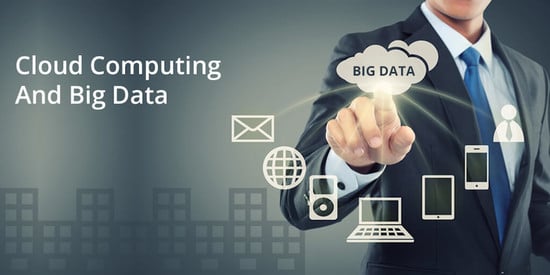Cloud Computing for Big Data Analysis
1. Introduction
2. Cloud Computing for Big Data Analysis
- Programming models and algorithms for distributed computing environments;
- Systems for data processing on cloud platforms;
- Data analysis workflows for distributed environments;
- Scalable data mining algorithms;
- Programming models and scalable algorithms for big data;
- Big data analytics and applications;
- Applications of machine learning in big data;
- Cloud-based data mining applications;
- Libraries, algorithms, and applications for big social data analysis.
3. Future Directions for Research
Author Contributions
Funding
Conflicts of Interest
References
- Sagiroglu, S.; Sinanc, D. Big data: A review. In Proceedings of the 2013 International Conference on Collaboration Technologies and Systems (CTS), San Diego, CA, USA, 20–24 May 2013; pp. 42–47. [Google Scholar]
- Belcastro, L.; Marozzo, F.; Talia, D. Programming Models and Systems for Big Data Analysis. Int. J. Parallel Emergent Distrib. Syst. 2019, 34, 632–652. [Google Scholar] [CrossRef]
- Belcastro, L.; Cantini, R.; Marozzo, F.; Orsino, A.; Talia, D.; Trunfio, P. Programming Big Data Analysis: Principles and Solutions. J. Big Data 2022, 9, 4. [Google Scholar] [CrossRef]
- Talia, D.; Trunfio, P.; Marozzo, F. Data Analysis in the Cloud: Models, Techniques and Applications, 1st ed.; Elsevier Science Publishers B.V.: Amsterdam, The Netherlands, 2015. [Google Scholar]
- Belcastro, L.; Marozzo, F.; Talia, D.; Trunfio, P. G-RoI: Automatic Region-of-Interest detection driven by geotagged social media data. ACM Trans. Knowl. Discov. Data 2018, 12, 27. [Google Scholar] [CrossRef]
- You, L.; Motta, G.; Sacco, D.; Ma, T. Social data analysis framework in cloud and Mobility Analyzer for Smarter Cities. In Proceedings of the 2014 IEEE International Conference on Service Operations and Logistics, and Informatics, Qingdao, China, 8–10 October 2014; pp. 96–101. [Google Scholar]
- Ancillai, C.; Terho, H.; Cardinali, S.; Pascucci, F. Advancing Social Media Driven Sales Research: Establishing Conceptual Foundations for B-to-B Social Selling. Ind. Mark. Manag. 2019, 82, 293–308. [Google Scholar] [CrossRef]
- Branda, F.; Marozzo, F.; Talia, D. Ticket Sales Prediction and Dynamic Pricing Strategies in Public Transport. Big Data Cogn. Comput. 2020, 4, 36. [Google Scholar] [CrossRef]
- Cesario, E.; Marozzo, F.; Talia, D.; Trunfio, P. SMA4TD: A Social Media Analysis Methodology for Trajectory Discovery in Large-Scale Events. Online Soc. Netw. Media 2017, 3–4, 49–62. [Google Scholar] [CrossRef]
- Marozzo, F.; Bessi, A. Analyzing Polarization of Social Media Users and News Sites during Political Campaigns. Soc. Netw. Anal. Min. 2018, 8, 1. [Google Scholar] [CrossRef]
- Mell, P.; Grance, T. The NIST Definition of Cloud Computing. NIST Special Publication. 800-145. 2011. Available online: https://nvlpubs.nist.gov/nistpubs/Legacy/SP/nistspecialpublication800-145.pdf (accessed on 17 October 2022).
- Cáceres, L.; Merino, J.I.; Díaz-Díaz, N. A Computational Intelligence Approach to Predict Energy Demand Using Random Forest in a Cloudera Cluster. Appl. Sci. 2021, 11, 8635. [Google Scholar] [CrossRef]
- Choi, J.Y.; Cho, M.; Kim, J.S. Employing Vertical Elasticity for Efficient Big Data Processing in Container-Based Cloud Environments. Appl. Sci. 2021, 11, 6200. [Google Scholar] [CrossRef]
- Shah, S.A.R.; Waqas, A.; Kim, M.H.; Kim, T.H.; Yoon, H.; Noh, S.Y. Benchmarking and Performance Evaluations on Various Configurations of Virtual Machine and Containers for Cloud-Based Scientific Workloads. Appl. Sci. 2021, 11, 993. [Google Scholar] [CrossRef]
- Belcastro, L.; Cantini, R.; Marozzo, F. Knowledge Discovery from Large Amounts of Social Media Data. Appl. Sci. 2022, 12, 1209. [Google Scholar] [CrossRef]
- Belcastro, L.; Marozzo, F.; Talia, D.; Trunfio, P. ParSoDA: High-Level Parallel Programming for Social Data Mining. Soc. Netw. Anal. Min. 2019, 9, 4. [Google Scholar] [CrossRef]
- Belcastro, L.; Marozzo, F.; Perrella, E. Automatic detection of user trajectories from social media posts. Expert Syst. Appl. 2021, 186, 115733. [Google Scholar] [CrossRef]
- Belcastro, L.; Cantini, R.; Marozzo, F.; Talia, D.; Trunfio, P. Learning political polarization on social media using neural networks. IEEE Access 2020, 8, 47177–47187. [Google Scholar] [CrossRef]
- Cantini, R.; Marozzo, F.; Bruno, G.; Trunfio, P. Learning sentence-to-hashtags semantic mapping for hashtag recommendation on microblogs. ACM Trans. Knowl. Discov. Data 2021, 16, 32. [Google Scholar] [CrossRef]
- Umair, A.; Sarfraz, M.S.; Ahmad, M.; Habib, U.; Ullah, M.H.; Mazzara, M. Spatiotemporal Analysis of Web News Archives for Crime Prediction. Appl. Sci. 2020, 10, 8220. [Google Scholar] [CrossRef]
- Da Costa, G.; Fahringer, T.; Gallego, J.A.; Grasso, I.; Hristov, A.; Karatza, H.D.; Lastovetsky, A.; Marozzo, F.; Petcu, D.; Stavrinides, G.L.; et al. Exascale machines require new programming paradigms and runtimes. Supercomput. Front. Innov. 2015, 2, 6–27. [Google Scholar]
- Talia, D.; Trunfio, P.; Marozzo, F.; Belcastro, L.; Garcia Blas, J.; Del Rio, D.; Couvée, P.; Goret, G.; Vincent, L.; Fernà ndez-Pena, A.; et al. A Novel Data-Centric Programming Model for Large-Scale Parallel Systems. In Lecture Notes in Computer Science: Proceedings of the Euro-Par 2019: Parallel Processing Workshops; Springer: Cham, Switzerland, 2020; pp. 452–463. [Google Scholar]
Publisher’s Note: MDPI stays neutral with regard to jurisdictional claims in published maps and institutional affiliations. |
© 2022 by the authors. Licensee MDPI, Basel, Switzerland. This article is an open access article distributed under the terms and conditions of the Creative Commons Attribution (CC BY) license (https://creativecommons.org/licenses/by/4.0/).
Share and Cite
Marozzo, F.; Belcastro, L. Cloud Computing for Big Data Analysis. Appl. Sci. 2022, 12, 10567. https://doi.org/10.3390/app122010567
Marozzo F, Belcastro L. Cloud Computing for Big Data Analysis. Applied Sciences. 2022; 12(20):10567. https://doi.org/10.3390/app122010567
Chicago/Turabian StyleMarozzo, Fabrizio, and Loris Belcastro. 2022. "Cloud Computing for Big Data Analysis" Applied Sciences 12, no. 20: 10567. https://doi.org/10.3390/app122010567
APA StyleMarozzo, F., & Belcastro, L. (2022). Cloud Computing for Big Data Analysis. Applied Sciences, 12(20), 10567. https://doi.org/10.3390/app122010567






